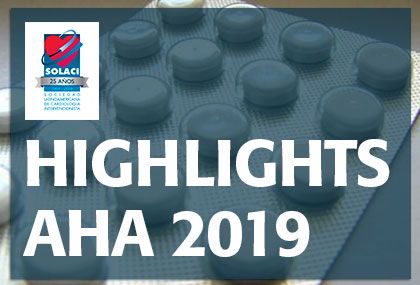In patients without formal indication for oral anticoagulation after successful transcatheter aortic valve implantation (TAVI), a treatment strategy including rivaroxaban 10 mg daily was associated with a higher risk of death or thromboembolic complications and, on top of that, a higher risk of bleeding than a conventional antiplatelet strategy.

So far, we did not know whether a direct factor Xa inhibitor such as rivaroxaban could prevent thromboembolic events after TAVI.
The GALILEO trial randomized 1644 patients without formal indication for oral anticoagulation after TAVI to rivaroxaban at a dose of 10 mg daily plus aspirin at a dose of 75 to 100 mg daily (only for the first 3 months) vs. aspirin at a dose of 75 to 100 mg daily plus clopidogrel at a dose of 75 mg daily (only for the first 3 months).
The primary efficacy endpoint was a composite of death and thromboembolic events. The primary safety endpoint was major, disabling, or life-threatening bleeding.
Read also: AHA 2019 | DAPA-HF: Dapagliflozin Effective for all Heart Failure Subgroups.
The trial was terminated prematurely by the safety monitoring board.
After almost a year and a half of follow-up, death or a thromboembolic event had occurred in 105 patients assigned to rivaroxaban and in 78 patients assigned to antiplatelet therapy (1.35; 95% confidence interval [CI]: 1.01 to 1.81; p = 0.04).
Major, disabling, or life-threatening bleeding had occurred in 46 patients in the rivaroxaban group and 31 patients in the antiplatelet group (hazard ratio [HR]: 1.50; 95% CI: 0.95 to 2.37; p = 0.08).
Read also: AHA 2019 | COLCOT: Colchicine and the Return of the Anti-Inflammatory Theory.
Mortality presented the same trend (HR: 1.69; IC 95%: 1.13 to 2.53). All of that led the safety monitoring board to terminate the study due to the lower efficacy and safety of rivaroxaban.
Conclusion
In patients who have undergone TAVI and have no formal indication for bleeding, rivaroxaban showed an increase in the number of deaths or thromboembolic events, as well as increased bleeding, compared with the traditional antiplatelet-based strategy.
Original Title: A Controlled Trial of Rivaroxaban after Transcatheter Aortic-Valve Replacement.
Reference: G.D. Dangas et al. Presentado en el congreso AHA 2019 y publicado simultáneamente en NEJM.
Get the latest scientific articles on interventional cardiologySubscribe to our weekly newsletter
We are interested in your opinion. Please, leave your comments, thoughts, questions, etc., below. They will be most welcome.





